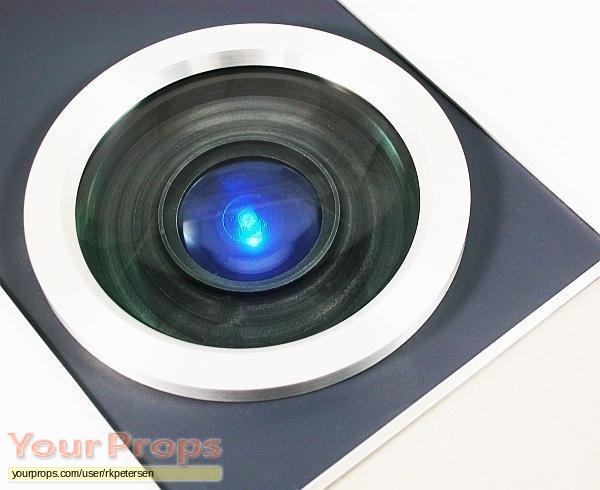

Were scored for WS (0=absence, 1=mild, 2=severe) and a sample of each breast wasĬollected for histology. Twenty animals per treatment were sacrifi ced at 12 and 25 days of age, breasts Treatments: control, coccidiostat, vaccinated, and vaccinated fed with a low energyĭiet. One-day-old chicks were randomly divided into. The age of WS onset in broiler chickens, and the effect of diet and different coccidiosisĬontrol programs on WS prevalence an experimental study was conducted Striations parallel to the direction of muscle fi bers that affects poultry meat. White striping (WS) is a muscle alteration characterized by the presence of white
Hal 9000 replica prop forum plus#
Diet had no effect on overall live performance of VACC-LE plus chickens, which were similar to those of the VACC group. This could be related to the higher slaughter weight reached by the COX group (P < 0.001) and the treatment effect (P < 0.01) that probably adds to the effect of live weight. At commercial slaughter age, total average prevalence was 96%, with COX birds showing higher level 2 prevalence (77.6%). There were no statistically significant differences due to the experimental treatment at this age. WS appeared at 25 d of age with an average prevalence of 11.5% and with lesions of moderate severity. The results suggest an ameliorative effect of coccidiosis control systems when compared to the control group in terms of live weight, breast yield, and whole breast weight, with heavier fillets characterized by higher pH values. After live performance, yields, and fillet pH were measured, the breasts were weighed and scored as level 0 (no WS), level 1 (moderate WS), and level 2 (severe WS) at each of the 3 ages data were covariate for slaughter weight. Seven hundred and twenty ROSS 708 strain male chicks were divided into 4 groups: a non-vaccinated group fed with standard diet (CONTROL) two groups vaccinated against coccidiosis but fed either a standard diet (VACC) or a low-energy diet supplemented with threonine and enzymes (VACC-LE plus) and a fourth group fed a standard diet containing anticoccidial additive except during the finishing period (COX). investigated with the sacrifice of 80 chicks at 12, and 80 chicks at 25 d of age. This study investigated the impact of 2 coccidiosis control systems (vaccine vs anticoccidial) and 2 feeding plans (standard energy vs low energy content, the latter supplemented with threonine and enzymes in the second half of the production cycle) on white striping (WS) prevalence and severity in chicken broiler breasts at commercial slaughter age (51 d). Key Words: White striping, coccidiosis, broiler Occurrence of white striping in chicken breast fillets in relation to broiler size. This study provided a new perspective for the control of WS prevalence and a starting point for further studies.īauermeister, L. These results could be explained by the different growing curves of the groups. Grade 2 causes breast downgrade that results in economic losses, and the mean WS score was higher in birds treated with coccidiostat than in vaccinated ones, but no difference was observed due to the diet. Score 2 was 54.0, 81.2, 62.5 and 68.6% whereas the mean WS scores were 1.50, 1.79, 1.58 and 1.63, for C, Cox, V and VLE, respectively, being significant (P<0.001) the difference Cox vs C and V. V and VLE, respectively (ns).The WS prevalence was above 90% in all groups. No BW differences were observed between Cox and V groups that received the same diet, nor between the two vaccinated groups fed different diets. Four groups of 140 broiler chickens were randomly allotted to the four experimental treatments: Control (C),Ĭoccidiostat (Cox), Vaccinated (V), and Vaccinated fed a Low Energy diet (VLE) were slaughtered at 51 days of age and all breasts have been scored for WS (0= no WS, 1= mild WS, 2= severe WS).

The aim of the study was to evaluate the influence of coccidiosis control program and diet on WS. White Striping (WS) is an alteration of breast muscle characterized by the presence of visible white stripes between muscle fibers that is becoming increasingly important in meat-type heavy chickens (Bauermeister et al., 2009).


 0 kommentar(er)
0 kommentar(er)
